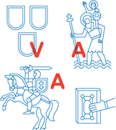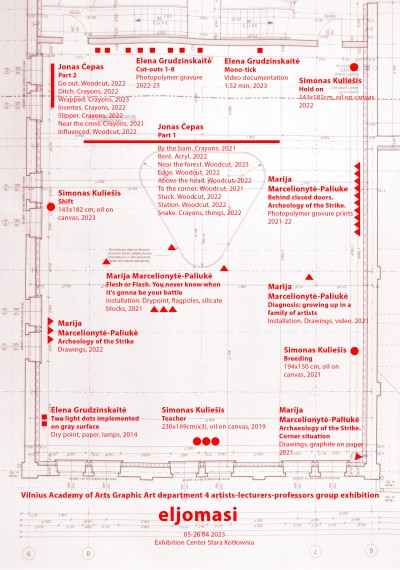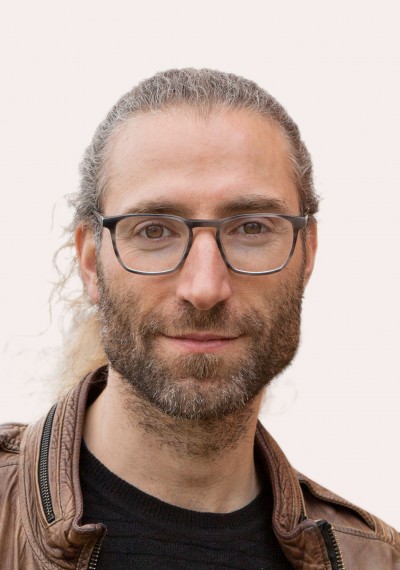I, Emilė Krutulytė, created Noros Krug's illustration exhibition „On Tyranny“
I can't take all the credit for it, I received a lot of help from Agnė Dautartaitė-Krutulės, a lecturer at the VAA Graphic Arts Department, and Mantas Janauskas, a 3rd year student of Painting. Wherever my creative and physical strength was exhausted, they jumped to my rescue.
The first exhibition "On Tyranny" took place at the Children's Hall of the Litexpo, the 2023 Vilnius Book Fair. And the second exhibition, which opened on 6 June at the Valstybės pažinimo centras, is still running.
The whole creative process started before Christmas, it was very unexpected to receive such an offer and I felt that I still had to earn the trust of the clients. We came up with all sorts of ideas, from what I considered some crazy ideas, like bringing a shipping container to Litexpo, or constructing a kind of shot bunker out of black walls, to what we managed to realise at the book fair.
From the very beginning, the suggestion of the exhibition space was clear - dark, gloomy, maybe a little heavier atmosphere, linked to the theme. Tyranny is not an easy subject, it is a bit easier to present to adults than to children. I would say the main discussion was with the commissioners about how to make an exhibition that was appropriate to the theme, but not to scare off the little visitors, as the space was in a children's hall. After a lot of meetings and reflection, the walls of the Litexpo were plastered from top to bottom with dark grey stickers, with the sinister, but at the same time funny, characters from Krug's illustrations, the yellowish title shining from afar, the frames full of relics of the old days and intriguing objects, all of which were deliberate decisions to create an inviting, cosy environment and to attract the younger viewers.

We worked on the installation for three full days and I, not having much experience in this field, thought that this would be the easiest part, because everything was already planned, bought, prepared, and in place. But both times we have done this exhibition, the law of zapadlo has always been at the back of our minds. There were defective stickers, stickers that didn't stick, frames that were hanging ugly, the installation was falling down, the lights weren't shining. There were problems in unexpected places and the only way to prepare for them was to realise that this is always the case with exhibitions and there is nothing you can do.



A solution that worked immediately, as soon as the doors of the Book Fair were opened, a path of stickers was created from the door to the exhibition, and within the first 15 minutes, we could already see a group of primary school children running down the 'path' and hugging our great pride, the 'black box', an installation that was as much a source of excitement as it was of stress.

I think one of the most enjoyable moments was when we were finishing the installation and we brought the trilingual books for passers-by to read, and it turned out that the German edition of the book had an absolutely black cover. Then we felt that all the fighting for dark space and the endless sticking of stickers on the walls was not in vain and that we were not the only ones who had the idea.
.jpg)
And another moment! When Nora Krug visited the exhibition and mentioned that she likes to go to antique shops and touch and collect all sorts of small beautiful things, then our frames of antiques shone like a new light, and it was very nice that the author herself was pleased and we could unintentionally see a deep connection with her.
When we did the second exhibition, most of the material was already prepared, but the space itself was very different from the first one, more intimate, more closed, with twice as much wall space. A lot of the time was spent planning how to implement the same exhibition in a new environment. Again there were unforeseen problems, something broke, there was not enough paint for the walls, but at the opening everything was ready and in its place, and we just let out a deep sigh.


I also had to work with the institution's designer, which was a good lesson. Every designer has their own system, their own way, and it's not only about understanding each other's technical nuances, but also about understanding each other's vision, finding some kind of appropriate way of communication.


.jpg)
.jpg)
.jpg)
Both times, I feel that our installation received the most attention. It was born when before Christmas I was thinking about all the installations that didn't make it to the winter previews, and then I realised that I now have another project where similar visuals and objects can come to life. We created a black box with holes on four walls, inviting you to look inside. We even adapted it for children. Its greatest effect is when there are a lot of people around and they are looking at each other's eyes on the bodies of dictators and tyrants illustrated by Krug. For a brief moment you feel uncomfortable and insecure when your eyes meet those of someone standing on the other side of the installation, you feel seen and watched closely. Children were running around looking for more holes, to see all the walls, and parents even sometimes got up to peek inside.

.jpg)
.jpg)
As an artist, one of the most important lessons was to learn how to rationalise and clearly justify decisions that sometimes come from a gut feeling. Because sometimes there is a feeling that an idea or a decision is right, that it looks like it belongs there. But it's not always easy to explain that artistic feeling to the client.
We bent, we ran, we carried, we drilled, but in the end, in the final minutes before the openings, we stood there with a smile on our faces and got better. Despite all the setbacks or obstacles, it was a great pleasure to realise these projects with such strong historical and political contexts, to contribute to the idea of Timothy Snyder and Nora Krug.
Emilė Krutulytė, Student at the Department of Graphic Arts.







